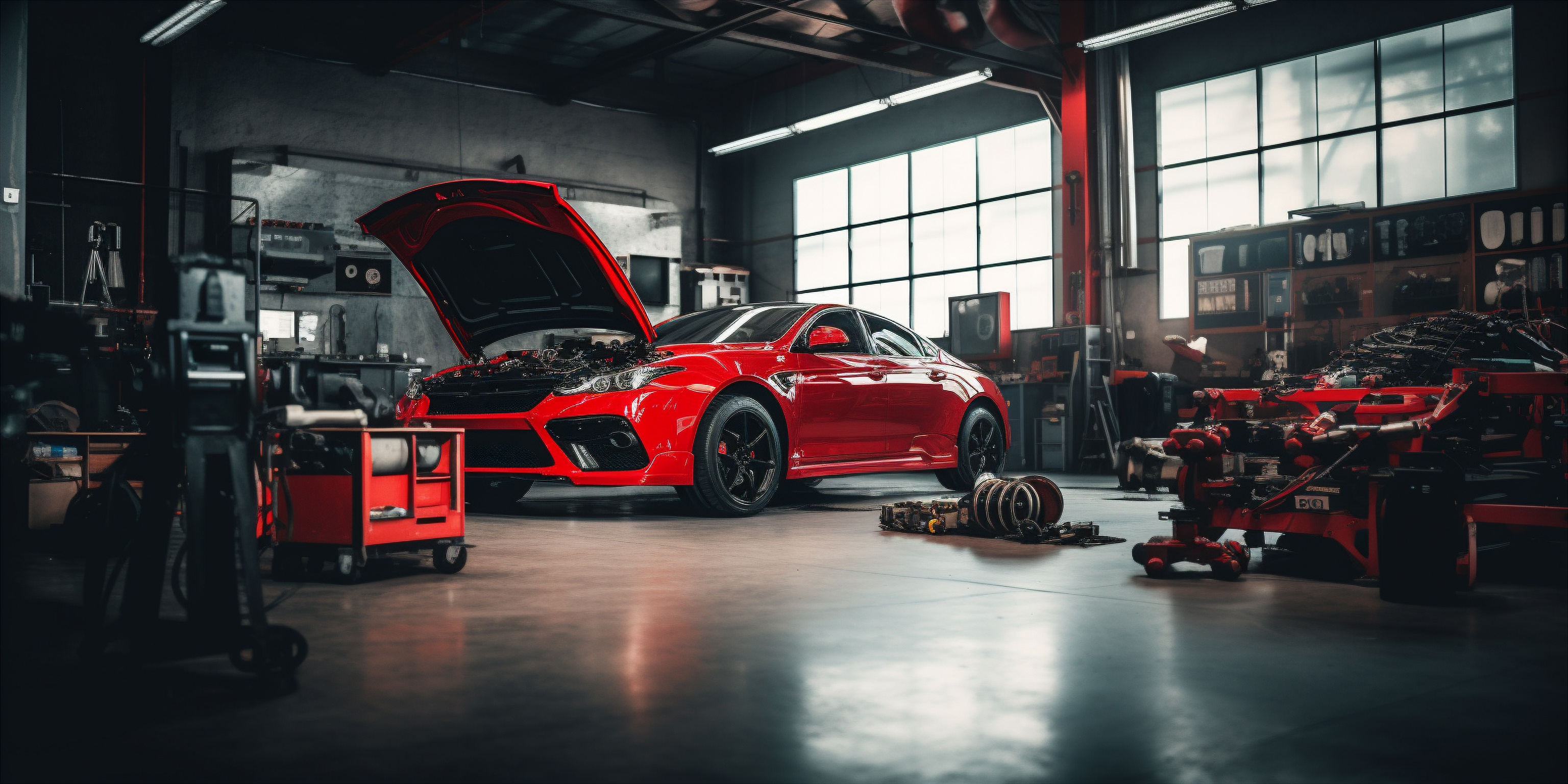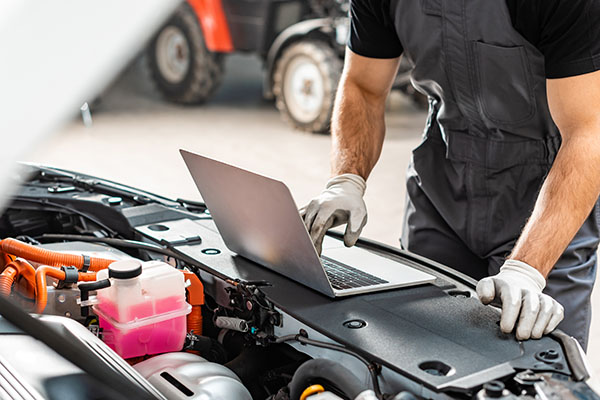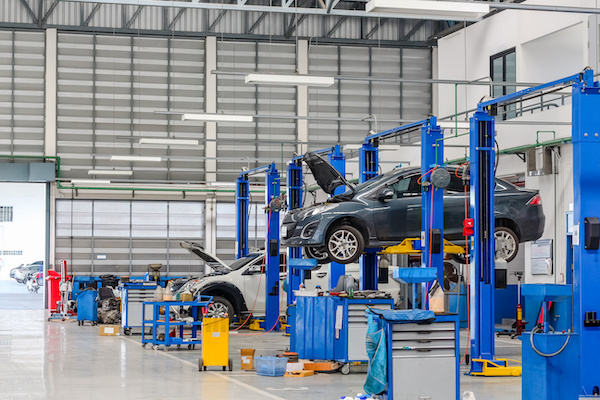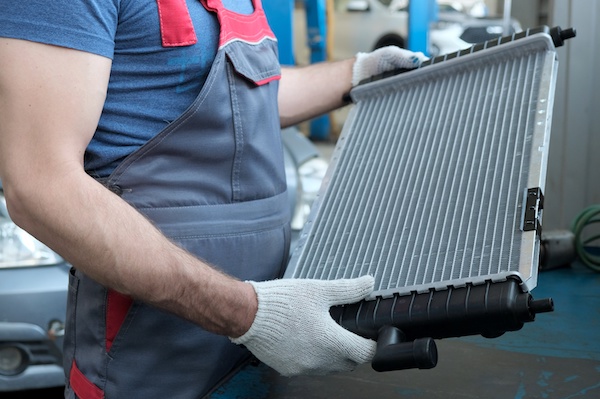Posted on 12/21/2023

Driving a car should be a smooth experience, where you feel in command and secure at every turn. Yet, when your steering system starts to fail, it can not only make your drive uncomfortable but also dangerous. Your vehicle's ability to respond accurately to your direction is pivotal for safe driving. Imagine you're cruising along the highway, and suddenly you sense something isn't quite right with the way your car maneuvers. It's subtle at first – perhaps a slight difficulty in turning the wheel – but this could be the beginning of steering system failure. To prevent yourself from being caught off guard by steering system troubles, familiarize yourself with these five must-know signs that signal it's time for a check-up or repair. Difficulty Turning The Wheel One of the most noticeable signs of a problem is if you find it difficult to turn the steering wheel. This can manifest as stiffness or a delay in response when ... read more
Posted on 11/30/2023

With the holiday season fast approaching, there's nothing quite like the promise of adventure and reuniting with loved ones. However, it's important to keep safety top of mind while embarking on your journey. These five simple tips will not only ensure your safety but also contribute to a joyous and stress-free travel experience. Let's make this holiday season unforgettable while also keeping ourselves and others safe on the road. Tip 1: Plan and Prepare for the Unexpected Before you hit the road, take a moment to plan your journey. Check the weather forecast, road conditions, and potential traffic delays. Ensure your vehicle is in optimal condition by performing a pre-trip inspection, including checking tire pressure, fluid levels, and brakes. Packing an emergency kit with essentials like first aid supplies, flashlight, a ... read more
Posted on 10/30/2023

Navigating the labyrinth of car troubles can often feel like deciphering an intricate puzzle. While the notorious check engine light serves as a prominent warning beacon, the true prowess of vehicle diagnostics extends far beyond this illuminated signal. In the realm of automotive care, understanding the depth of what vehicle diagnostics can uncover is akin to unlocking the secrets to a smoother, safer, and more efficient driving experience. Let's delve into the world of vehicle diagnostics and unravel the myriad of problems it can expertly fix and capture, safeguarding both your peace of mind and the health of your beloved four-wheeled companion. What Components and Systems Are Checked?Engine System: Ignition system Fuel injection system Emission control system Timing and idle settings Transmission System: Gear shifting mechanism Transmission fluid levels and condition Clutch performance (for manual tra ... read more
Posted on 9/29/2023

There's nothing quite like the excitement of purchasing a new or used vehicle. The sleek exterior, powerful engine, and the countless adventures that await all make it an unparalleled experience. However, many car buyers overlook a pivotal step - the post-purchase inspection. Beyond the initial exhilaration, it is important to make sure that your new automotive family member is thoroughly inspected to avoid any potential issues. Understanding Post-Purchase Inspections A post-purchase inspection, often referred to as a PPI (Pre-Purchase Inspection), is a comprehensive evaluation of your newly acquired vehicle's condition after the sale. While it may seem counterintuitive to inspect a vehicle you've just bought, this step serves several invaluable purposes: 1. Verification of Condition A post-purchase inspection verifies that the vehicle is in the condition as described during the sale. It ensures there are no undisclosed issues or surpri ... read more
Posted on 8/31/2023

Congratulations on your new-to-you-used car! As you set out on exciting adventures with your four-wheeled companion, it's essential to give it the care it deserves. Just as you would with a new car, maintenance, and a thorough inspection are key. This especially applies to used cars because hidden problems and issues aren't as rare as you would hope to be. The answers to "What should I consider doing" and "Why would I invest money so early on" are simple, and will conveniently be covered in today's article! 1. Interior and Exterior Clean: Reviving Your Car's Beauty First impressions matter, and that applies to your car too! Giving your car a thorough interior and exterior clean not only makes it look fantastic but also sets the tone for your ownership journey. Interior Cleaning: Clear out any clutter or debris left behind by the previous owner. Vacuum the seats, carpets, and floor mats to remove dirt and dust ... read more
Posted on 7/31/2023

In the pursuit of sustainable mobility, automotive manufacturers have embraced hybrid and plug-in hybrid technologies to offer environmentally friendly alternatives to traditional internal combustion engines. BMW, a leading name in the automotive industry, has been at the forefront of this eco-conscious movement, introducing a lineup of hybrid and plug-in hybrid vehicles. If you are wondering about the reliability and performance of BMW in this realm, you are in the right place! Here is our opinion and a few facts on the topic: Electrified Performance One of the most significant advantages of BMW hybrids and plug-in hybrids is their electrified performance. Combining internal combustion engines with electric motors, these vehicles offer seamless power delivery, enhanced acceleration, and reduced fuel consumption. The electric motor complements the combustion engine, providing instant torque and delivering an exhilarating driving experience. Fuel Effic ... read more
Posted on 6/29/2023

When it comes to vehicle repairs and maintenance, having the right tools is crucial. While many car owners have a set of tools at home, professional repair shops are equipped with specialized equipment designed to handle a wide range of automotive tasks. Let's explore the differences between tools and equipment commonly found at home and those found in professional repair shops, highlighting the advantages of relying on the expertise and resources of professional mechanics. Here are the main advantages a professional repair shop has: Specialized tools Advanced diagnostic equipment Lifts and hoists Specialized machinery Access to manufacturer resources Professional repair shops invest in a wide array of specialized tools that are specifically designed for various automotive tasks. These tools include diagnostic scanners, air tools, hydraulic lifts, torque wrenches, and precision measurement instruments. How can these tools help ... read more
Posted on 5/29/2023

The summer season is upon us, and that means it's time for exciting road trips and memorable experiences. Whether you're exploring scenic routes, visiting family and friends, or venturing solo on a long-awaited vacation, the last thing you want is car sickness to dampen your trip. The queasy feeling, dizziness, and discomfort associated with motion sickness can quickly turn a fun-filled ride into an unpleasant experience. But fear not! Our team is here to share some valuable tips to help you avoid car sickness and make your road trips more doable. Tip #1: Choose the Right Seat Selecting the appropriate seat in the car can make a significant difference in preventing car sickness. If you're prone to motion sickness, opt for the front passenger seat. Looking out the windshield offers you a clear view and can help your brain better process the motion and reduce the chances of feeling nauseous. Tip #2: Avoid Excessive Screen Time or Reading These activities can increase the ... read more
Posted on 4/30/2023
.jpeg)
Brake rotors are a critical component of your vehicle's braking system. They play a vital role in ensuring the safety of your ride by providing the necessary stopping power. However, over time, brake rotors can become warped, resulting in a compromised braking system. Causes of Brake Rotor Warping And What You Can Do To Prevent It Excessive Heat One of the primary causes of brake rotor warping is excessive heat. When you press on the brake pedal, the brake pads and rotors create friction that slows down your vehicle. This friction generates heat that can cause the brake rotors to warp. Repeated and prolonged braking, such as when driving downhill, can lead to excessive heat build-up and rotor warping. Additionally, using low-quality brake pads or mismatched brake components can also result in excess heat and rotor warping. Moisture and Corrosion Another cause of brake rotor warping is moisture and corrosion. When your vehicle is exposed to moisture, such as during heavy rain o ... read more
Posted on 3/24/2023

Most people have never heard of the radiator in their vehicle's cooling system before, let alone its crucial role in keeping your engine cool and preventing it from overheating. Fortunately, Ming's Auto Repair is here to explain what a radiator is and exactly what it does. What Is a Radiator? A radiator is a heat exchanger located at the front of your car's engine compartment. It is typically made of aluminum and is designed to transfer heat from the engine coolant to the air that flows through it. The radiator is connected to the engine through a series of hoses. What Does a Radiator Do? The radiator's primary job is to remove heat from the engine coolant. As the engine runs, it generates a substantial amount of heat, and the coolant absorbs this heat. The coolant then flows through the engine and transfers the heat away from the engine block. As the coolant flows through the radiator, it releases the heat it has absorbed, dissipating it into the air. Most Common ... read more